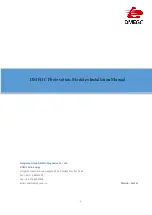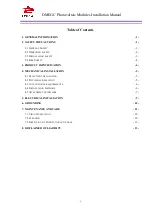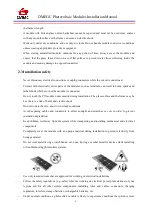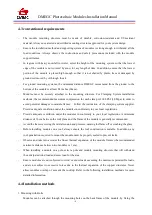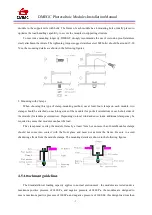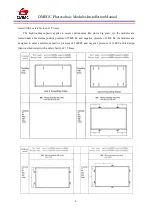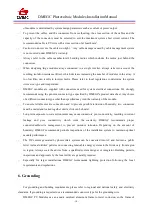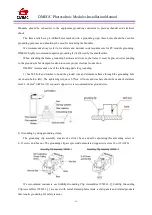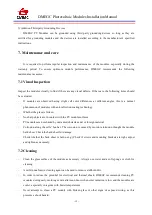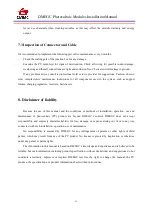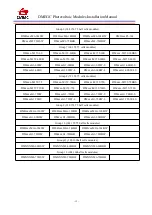
DMEGC Photovoltaic Modules Installation Manual
- 10 -
of modules is determined by system design parameters such as current or power output.
To prevent the cables and the connectors from overheating, the cross section of the cables and the
capacity of the connectors must be selected to suit the maximum system short circuit current. The
recommended cable is PV wire with a cross section of at least 4mm
2
.
Caution: do not secure the cables too tight. Any cable damage caused by cable management system
is not covered under DMEGC’s warranty.
Always refer to the cable manufacturer's bending radius which includes the radius just behind the
connectors.
When designing large modules arrays connected to a single inverter, always take into account the
resulting isolation resistance (Riso), which decrease increasing the number of modules in the array. A
too low Riso can results in inverter faults. Please refer to local regulations to determine the system
wires size, type and temperature.
DMEGC modules are supplied with connectors used for system electrical connections. We strongly
recommends using the genuine connector type specified by DMEGC's product data sheet. Any choice
of a different connector type other than specified may void the warranty of the module.
To ensure reliable electric connection and to prevent possible intrusion of humidity, two connectors
must be mated and locked together until a click can be heard.
Long-term exposure to wet environments may cause connectors' poor connectivity, resulting in current
leakage and poor conductivity which voids the warranty. DMEGC recommends proper
connector/cable/wire management to prevent moisture intrusion. Depending on the amount of
humidity, DMEGC recommends periodic inspections of the installation system to maintain optimal
module performance.
The DC current generated by photovoltaic systems can be converted into AC and fed into a public
Grid. As local utilities’ policies on connecting renewable energy systems to the Grids vary from region
to region. Always seek the advice from a qualified system designer or integrator. Building permits,
inspections and approvals by the local utility are generally required.
Especially for larger installations DMEGC recommends lightning protection following the local
requirements and regulations.
6. Grounding
For grounding and bonding requirements, please refer to regional and national safety and electricity
standards. If grounding is required, use a recommended connector type for the grounding wire.
DMEGC PV Modules use an anodic oxidized aluminum frame to resist corrosion, so the frame of

